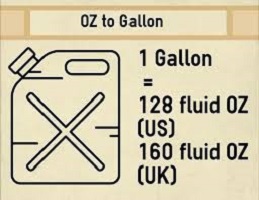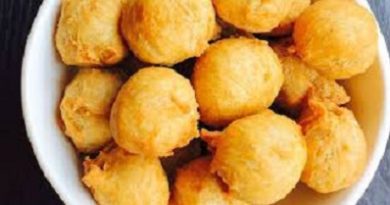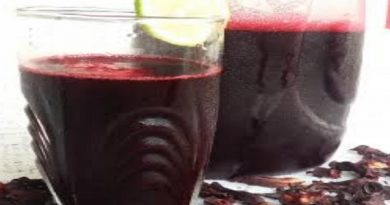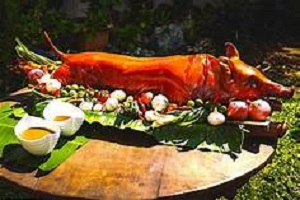Ounce to Gallon Conversions ~ How Many Ounces in a Gallon
Ounce to Gallon Conversions ~ How Many Ounces in a Gallon

There are 128 US fluid ounces in a US gallon. If you’re in the UK, you’ll find a gallon measuring 160 UK fluid ounces.
How to Convert Ounces to Gallons ~ How many gallons are there in an ounce?
The conversion factor from ounces to gallons is 1 fluid ounce = 0.0078125 gallons.
Fluid Ounce Information (Oz)
A fluid ounce is a unit of volume in both the Imperial and US customary unit systems. However, the two measures are not identical:
The Imperial fluid ounce is 1/160 of an imperial gallon, 1/20 of an imperial pint, or 8 fluid drams, which is approximately 1.734 cubic inches or 28.4130625 milliliters.
This volume of water weighs almost exactly one avoirdupois ounce (the volume occupied by one ounce at 62 °F (16.7 °C) when weighed in the air with brass weights).
This is because the US liquid gallon is smaller than the UK imperial gallon (3.785 liters compared to 4.546 liters).
Different water bottle sizes provide numerous advantages.
Not only can having a variety of sizes help you live more sustainably and conveniently, but they can also help you track your daily water intake.
Meeting your hydration goals has never been easier – until you have to calculate all those ounces!
Ounce to Gallon Conversions
Do you dislike math? We’ve got your back. Our handy guide makes converting liters to gallons simple.
Our simple conversion guide can answer any questions you have about the US to metric conversions, such as:
- How many ounces in a gallon
- How many ounces of water to drink in a day
- How many ounces in a half gallon
- How many water bottles in a gallon
How Many Ounces of Water Should I Drink a Day? Ounce to Gallon Conversions
Many people are curious about how much water they should consume each day. Your gender, health, climate, and the intensity of your daily activities all influence the answer.
Industrial workers who work on construction sites in the hot sun, for example, will have different hydration needs than office workers.
The Mayo Clinic recommends drinking extra water to compensate for any fluid lost during exercise or activity as a general rule.
Consider the following factors when planning your optimal hydration:
Medical Conditions
Symptoms of various illnesses, such as fever and sweating, diarrhea, and vomiting, can all contribute to fluid loss.
In such cases, more water than the recommended daily allowance is required to compensate for the loss of hydration
Pregnant and Breastfeeding Women
Women who are pregnant or breastfeeding require additional fluids. According to the Office on Women’s Health, pregnant women should drink 2.4 liters (81 ounces) of fluids per day, which equals 0.6 gallons.
Breastfeeding mothers should consume 3.1 liters (108 ounces) of liquid per day or the equivalent of 0.8 gallons.
It’s always a good idea to consult your doctor about your health during and after pregnancy.
Climate
Climate is another factor to consider when determining how many ounces of water to drink per day. You’ll probably get more sun exposure in hot climates.
This can cause your skin to dry out and make you thirsty faster. Given that thirst is frequently the first sign of mild dehydration
It’s essential to act quickly and drink plenty. Cold, high-altitude climates present unique challenges.
Although you may not feel thirsty as strongly, dehydration can still be a factor. High-altitude dry air can cause fluid loss.
We also lose carbs as a result of the cold weather, which adds to our dehydration.
Activity Level
Moving our bodies necessitates the consumption of energy and water. However, as we move, we are more likely to lose some hydration through sweat.
If you’re training for a marathon or working in the sun all day, your hydration needs will be different than someone who sits at a desk for eight hours.
When you’re breaking a sweat, it’s time to grab a bottle of water and replenish the fluids you’ve lost during the activity.
Of course, even the most sedentary among us require water. Even if you don’t work up a sweat every day, the human body requires a certain level of hydration to survive.
While the hydration needs of a sedentary person may differ from those of an athlete, we could all benefit from drinking more water on a daily basis.
Diet
Food is essential for maintaining hydration. Our meals assist us in replenishing sodium, electrolytes, and amino acids that have been lost.
They also cause thirst and promote fluid consumption.
Eating fluid-rich foods like fruits and vegetables on a regular basis can help us stay hydrated.
If you don’t eat these foods on a regular basis, you’ll probably need to drink more water to compensate.
Ounce to Gallon Conversions ~ General Top tips
While these various scenarios should always be considered, the National Academies of Sciences, Engineering, and Medicine recommends the following water intake guidelines as a general guideline.
We’ve included water measurements in cups and liters, as well as an oz-to-liter conversion.
- Daily Hydration for Men: 15.5 cups; 3.7 liters; 126 oz
- Daily Hydration for Women: 11.5 cups; 2.7 liters; 91 oz
Ounce to Gallon Conversions? How Many Ounces in a Gallon?
What about by the gallon?
Some people like to keep their hydration goals in the forefront of their minds and use a large bottle to track how much water they drink.
When ounces or cups aren’t enough, measure water by the gallon
Here’s how it works. When converting liters to gallons, keep in mind that a gallon contains 128 oz, which is conveniently close to the recommended daily fluid intake for men and women:
- Men: about 1 gallon of water per day
- Women: 0.7 gallons per day
One-gallon water bottle line makes it simple and convenient to stay hydrated throughout the day.
Dehydration is unpleasant and causes symptoms such as fatigue, headaches, and muscle cramps, which we’d all prefer to avoid.
Moderation is vital. Excessive hydration can also be hazardous.
Although over-hydration is uncommon in healthy adults, athletes can occasionally over-hydrate, resulting in hyponatremia.
This occurs when the sodium content of the blood becomes too diluted, which can be dangerous and even fatal.
Balanced hydration is key. Staying hydrated will ensure peak athletic performance or simply allow you to fully enjoy your activities.
According to the Mayo Clinic, a healthy water balance in the body is essential for a variety of bodily functions including temperature regulation, joint lubrication, protection of sensitive tissues, and waste removal.
How many liters are there in a gallon? How Many Liters to a Gallon?
Perhaps you’re wondering how many liters there are in a gallon. Every gallon contains 3.7 liters, believe it or not. When you compare soda and milk, it’s easier to visualize how much water there is.
Most of us are familiar with the appearance of a gallon jug of milk. Consider a standard two-liter bottle of soda. One gallon of water is equivalent to nearly two two-liters!
Men should drink about 3.7 liters of water per day, according to the Mayo Clinic. Women should drink at least 2.7 liters of water per day.
These recommendations, as always, can be scaled up based on your health, activity level, and climate.
Still, comparing your water consumption to two-liter bottles of soda or a gallon jug of milk can make the liter-to-gallon conversion process a little easier.
Half Gallon to Oz Conversions ~ Ounce to Gallon Conversions
If a gallon seems too large, go for a half gallon.
Knowing how many ounces are in a half gallon makes it simple to compare your daily water intake to your goal.
Conversions from gallon to liter can also be simplified for half gallons. Half a gallon is equal to 64 oz to gallon conversion.
To meet the daily requirements, adult males only need to drink two refills of water bottles in the 64 oz size.
Adult women should drink about 89 ounces of liquid per day, which is about one full 64 oz water bottle plus half a refill.
The 128 oz to gallon conversion, which equals one gallon, is an even simpler calculation. One-gallon water bottle size is the exact amount of daily hydration recommended for adult males.
To meet their water intake guidelines, women should drink slightly more than half of a one-gallon bottle (0.7 liters).
The 64-oz and one-gallon water bottle sizes are ideal for long-distance travel, but it’s sometimes easier to carry a smaller, lighter bottle, especially for shorter activities.
Water Bottle Sizes & Conversions ~ Ounce to Gallon Conversions
- 40 oz to gallon conversion: 0.31 gallons
- 40 oz to liter conversion: 1.2 liters
- 22 oz to gallon conversion: 0.17 gallons
- 22 oz to liter conversion: 0.65 liters
- 18 oz to gallon conversion: 0.14 gallons
- 18 oz to liter conversion: 0.53 liters
- 14 oz to gallon conversion: 0.10 gallons
- 14 fl oz to liter conversion: 0.4 liters
Water Bottle Sizes & Conversions ~ Ounce to Gallon Conversions
- 12 oz to gallon conversion: 0.1 gallon
- 12 oz to liter conversion: 0.35 liters
- 16 oz to gallon conversion: 0.12 gallon
- 16 oz to liter conversion: 0.5 liters
- 20 oz to gallon conversion: 0.16 gallon
- 20 oz to liter conversion: 0.6 liters
- 24 oz to gallon conversion: 0.2 gallon
- 24 oz to liter conversion: 0.7 liters
- 32 ounces to gallon conversion: 0.25 gallon
- 32 oz to liter conversion: 0.9 liters
Tips for Meeting Your Daily Water Goals
Now that you know how to convert gallon to a liter and how much water to drink per day, here are some amusing tricks for tricking yourself into staying hydrated:
Flavor Enhancers
Converting ounces to liters isn’t going to get anyone to start drinking more water on their own. Instead, flavor your water – you’d be surprised how addictive it can be.
It’s simple, healthy, and enjoyable to add fresh fruit, vegetables, and herbs to your water every day.
Try watermelon and cucumber slices, or combine lemon and fresh ginger. Each sip adds a dash of adventure to the mundane.
High-impact exercise frequently necessitates the addition of vitamins and electrolytes.
Adding these to your water can improve the flavor while also providing the multivitamins you need to stay energized for the long haul.
This is true even for industrial athletes who aren’t participating in a sport or working out for the sake of gaining muscle.
If you’re sweating profusely at work, half-liter to oz conversions will only get you so far. For maximum hydration, add flavor enhancers, vitamins, and electrolytes.
Every meal should include water.
Instead of soda, juice, or wine with your meal, try some icy cold water. Because of its versatility, water goes well with almost any food.
With this strategy, you will not only drink more water, but you will also aid in the digestive process.
Digestion starts in the mouth when you begin chewing your food. Washing it all down with water aids food passage through the esophagus and into the stomach.
This reduces the likelihood of constipation and bloating.
Drink Water When You Wake Up
If you’re serious about staying hydrated, start your day with water. It’s an excellent way to signal to your body that it’s time to begin your day.
We naturally become dehydrated overnight because there isn’t much water consumption during our REM cycles. You may experience some dry mouth and grogginess when you awaken.
Water washes away those feelings, providing a welcome wake-up call for your entire body.
Stickers for Water Bottles
We recommend personalizing your bottle with decorative decals and stickers to keep you motivated to drink more water.
Everyone in your home will recognize it as your water bottle, and it will also serve as a visually appealing reminder of your distinct personal style.
Water Bottle Add-Ons
Make your bottle even more useful by adding practical upgrades such as the paracord handle, which provides additional storage options and easy carrying with a sturdy rope handle.
With the built-in compass, whistle, and fire starter, you’ll be ready for any adventure.
Apps for Drinking Water
Water drinking apps which are free to use, are another effective way to remind yourself to drink enough water.
You can track your water over the course of days, weeks, and months, allowing you to monitor your progress not only on a daily basis but also over time.
Many of these apps also include gallon-to-liter conversion calculators.
Take Your Water with You ~ Water on the Go
Have you ever felt like you’re too busy to properly hydrate? It’s difficult to drink enough water while on the go.
Thankfully, advances in water bottle technology have eliminated many of the most inconvenient aspects of carrying your drink with you throughout the day
Cup holder-friendly water bottle designs keep your beverage close at hand at all times. Stainless steel keeps your water cold for several hours.
High-Water-Content Food
The only way to stay hydrated is to drink liquids from a water bottle.
One of our favorite strategies for maintaining a balanced amount of hydration in the body is to incorporate foods with high water content into your diet.
Choose the juiciest fruits and vegetables, such as cucumber (96% water), watermelon, grapefruit, and zucchini.
Regular Physical Activity ~ Exercise
Regular exercise has numerous advantages, including keeping you motivated to drink plenty of fluids.
Working up a sweat will almost certainly make you thirsty, which is one of the most powerful motivators for drinking water.
The American Council on Exercise recommends pre-hydrating with 7 to 20 ounces of water 2 to 3 hours before exercising to ensure you drink enough during your workout.
Drink 7 to 10 ounces of water every 10 to 20 minutes during your workout. That equates to 207 to 295 mL of hydration.
They recommend drinking 8 ounces (236 mL) of water no more than 30 minutes after working out.
Now that you know everything you need to know about staying hydrated, it’s time to have fun, drink water, and repeat!
FAQs about Ounce to Gallon Conversions
How many ounces in a half gallon?
64 ounces make up a half gallon.
Convert Ounces to Gallons ~ Ounce to Gallon Conversions
The formula is P gallons x 128 = x fluid ounces because 1 US fluid ounce is equal to 0.0078125 fluid gallons.
How many 8 oz water bottles make a gallon?
One US gallon has 128 fluid ounces in it. In each gallon, you would receive 16 8-ounce glasses of water.
How many 16-ounce water bottles does it take to make a gallon?
8 containers
The answer is that it takes eight 16-ounce bottles to make one gallon.
How many ounces of water to drink in a day?
Men: about 128 ounces of water per day
Women: 89.6ounces per day
How Many liters in a Gallon?
For every gallon, 3.7 liters are contained.
How many ounces are in a gallon of water? Ounce to Gallon Conversions
A gallon of water weighs 128 fluid ounces in the US. A gallon of water weighs 160 fluid ounces in the UK.
This is due to the fact that gallons and fluid ounces are measured differently in the US and the UK.
How many gallons do 64 ounces equal? Ounce to Gallon Conversions
No. 128 US fluid ounces make up a gallon of liquid. This implies that 64 US fluid ounces make up a half gallon.
Is 1 gallon the same as 64 oz?
No. A gallon of liquid contains 128 US fluid ounces. This means that half a gallon measures 64 US fluid ounces.
How many 32 oz make a gallon?
32 ounces are equivalent to one quart and one fluid ounce in the US, which is 1/4 of a gallon. Therefore, 4 would be required to create 1 US gallon.
How many oz in 2 gallons?
Two gallons contain 256 fluid ounces.
How many oz in 3 gallons?
Two gallons contain 256 fluid ounces.
How many ounces in a gallon?
1 us gallon is 128 fluid ounces
How many ounces are in a gallon?
1 us gallon =128 fluid ounces
How many fluid ounces in a gallon?
1 us gallon makes 128 fluid ounces
How many ounces in a half gallon? Ounce to Gallon Conversions
76.8608 oz
How many ounces in a gallon of water? Ounce to Gallon Conversions
128 0z
How many ounces are in a half a gallon? Ounce to Gallon Conversions
76.8608 oz
How many ounces in half a gallon?
76.8608 oz
How many ounces is in a gallon?
128 oz
How many ounces in a gallon?
128 oz
How many fluid ounces are in a gallon?
128 oz
How many ounces in a gallon?
128 oz
How many fl ounces are in a gallon?
128 oz
How many ounces are in a gallon of water?
128 oz
How many ounces are in a half gallon?
76.8608 oz
How many ounces in a 5-gallon?
768.608


